China titanium dioxide industry: current status and following steps.
Rutile Grade Range of China TiO2 grades on the China and World Markets.
The technical side of the coin.
Part-2
During the first part of this article series (see The technical side of the coin, Part-1) we have provided a classification of world grades of rutile titanium dioxide as they are represented in the portfolio of leading world manufacturing companies of TiO2. Now let's turn to China and analyze what an arsenal of products for which applications and what quality have Top China companies, and also other members of the China TiO2 industry and compare it with that what offered by leading global companies. This will allow us to clarify how much prepared the China TiO2 industry to compete with the world's leading companies and in what aspects it is necessary to make changes to improve their competitiveness, and for a number of China TiO2 companies these changes will generally be a matter of survival.
2.3. Rutile Grade Range of China TiO2 grades on the China and World Markets.
At the moment all China manufacturers of titanium dioxide produce more than 150 different grades of rutile titanium dioxide. And more than 50 rutile grades are provided rutile on the market or by trading companies under their own brands or by companies having curtailed technological production schemes of titanium dioxide.
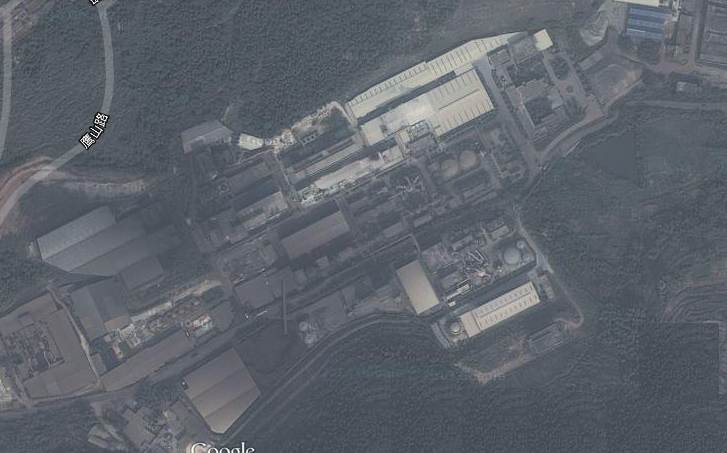
‘Sulphate’ TiO2 plant of Guangdong Huiyun Titanium Industry Co. Ltd. from Satellite view Photo taken using Google Maps tools
The second segment is grades of trading companies for which China manufacturer of titanium dioxide are packing production into own branded packing of these trading companies. This often discourages some customers of titanium dioxide who are not found for a particular brand of TiO2 really existing plant. For example if you type in the resource http://www.alibaba.com/ request 'titanium dioxide', you will find that among offered for you to choose different suppliers of many grades of titanium dioxide a lot of the grade names you will not find at any real manufacturer of TiO2 in China. Actually these are brands of trading companies, many of which are issued by real China manufacturers under other names. We have seen cases where the manufacturer releases the same grade under 3-4 different names depending on the wishes of its distributors.
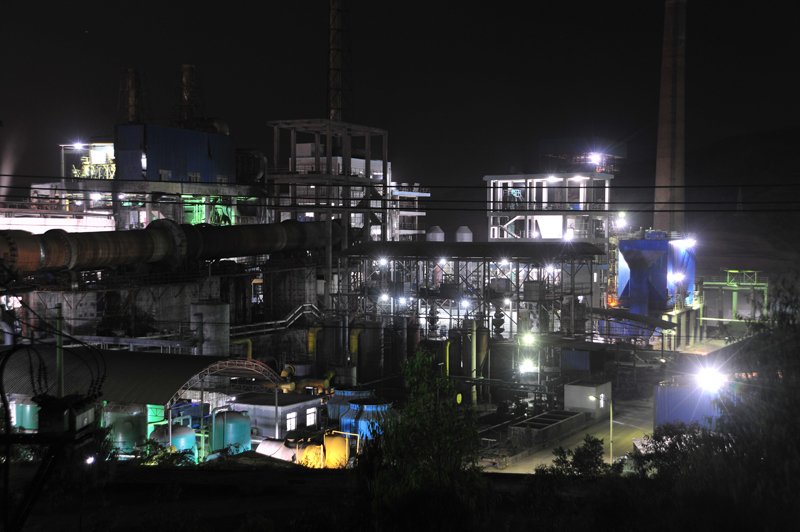
‘Sulphate’ TiO2 plant of Panzhihua Haifengxin Chemical Industry Co.Ltd Photo taken from http://www.pzhhfx.com/upload/201207/201207100618546041.jpg
The third segment is grades of titanium dioxide which are produced by companies having only limited features for the production of titanium dioxide (just Finishing Factories); these companies buy at other manufacturers of titanium dioxide already finished Uncoated Rutile (Calciner Discharge) as a raw-TiO2, and then in their Finishing Factories produce the necessary operations for grinding, surface treatment, filtration and washing from salts, drying, grinding and packaging of the product, which, of course, produced under own brands of such companies. In fact, with the right statement of quality requirements of the original raw-TiO2, corresponding entrance control, presence of good technologies and equipment and well-established quality control of finished products, such grades may have high quality and stability.
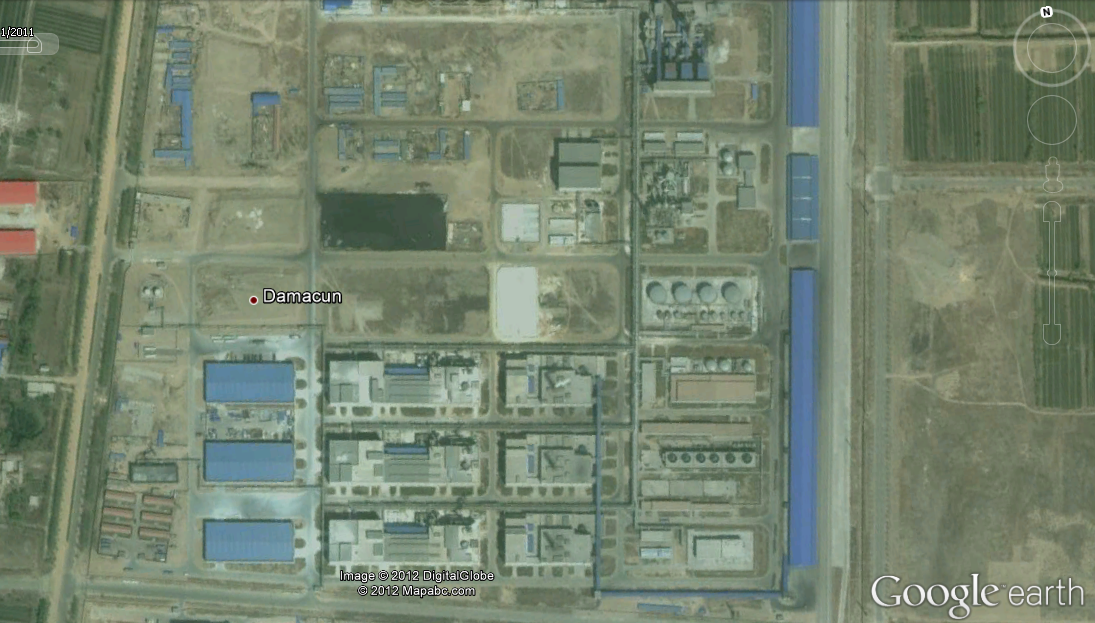
‘Sulphate’ TiO2 plant of Jinan Yuxing Chemical Co. (Bluestar Group) from Satellite view Photo taken using Google Earth tools
But let's go back to the manufacturers of titanium dioxide who have a full production cycle from ilmenite/titanium slag /synthetic rutile to the final pigmentary titanium dioxide (Rutile). RD Titan Group Innovative TiO2 conducted study of the spectrum of rutile products manufactured by various China companies. The results of this investigation you may see in Table 11-16 (for the ‘sulfate’ rutile grades) and Table 17 (for the ‘chloride’ grades). Please note that for the purposes of this article we have anonymized the names of China companies and their grades of titanium dioxide, accordingly companies just numbered by sequence numbers, and grades are named depending from the number columns in the table [the first figure, and for DP Type 1 - the first two figures] and the sequence number in lines of tables [the last two figures]. Also note that the given classification is based on some formal attributes and publicly available information and does not guarantee that grades actually correspond to the required level for application in one or another direction of industry.
Detailed classification of each grades of rutile from the world's titanium dioxide producers (300+ grades), including China grades with real names (150+ from manufacturers and 50+ from distributors and companies with shortened production cycles), TDS, SDS (MSDS) and other details RD Titan Group Innovative TiO2 plans to make accessible to the public in December 2015 in publication Comprehensive Dossier of the World's Titanium Dioxide Grades and TiO2 Manufacturers (see the ADVERTISING MESSAGE with detailed information).
Table 11 (‘Sulphate grades’)
|
# |
Type of TiO2 according applications |
China TiO2 Company (‘Sulphate route’)-01a. |
China TiO2 Company (‘Sulphate route’)-01b |
China TiO2 Company (‘Sulphate route’)-02a |
China TiO2 Company (‘Sulphate route’)-02b |
China TiO2 Company (‘Sulphate route’)-03 |
China TiO2 Company (‘Sulphate route’)-04 |
China TiO2 Company (‘Sulphate route’)-05 |
China TiO2 Company (‘Sulphate route’)-06 |
China TiO2 Company (‘Sulphate route’)-07 |
|
1 |
P&C Type 1 |
R-101 |
- |
- |
- |
- |
- |
- |
- |
- |
|
2 |
P&C Type 2 |
R-201 |
- |
R-202 |
R-203 |
R-204 |
R-205, R-206 |
R-207 |
R-208, R-209 |
R-210 |
|
3 |
P&C Type 3 |
- |
- |
- |
R-301 |
- |
- |
- |
R-302 |
- |
|
4 |
P&C Type 4 |
R-401 |
- |
- |
- |
- |
- |
- |
- |
- |
|
5 |
P&C Type 5 |
R-501, R-502 |
R-503, R-504, R-505 |
R-506 |
R-507 |
R-508, R-509, R-510, R-511, R-512 |
R-513 |
- |
R-514, R-515, R-516 |
R-517 |
|
6 |
P&C Type 6 |
R-601 |
R-602 |
- |
- |
- |
- |
- |
- |
R-603 |
|
7 |
Plastic Type 1 |
R-701 R-702 R-703 |
R-704 |
- |
- |
R-705 |
- |
- |
R-706 |
R-707 |
|
8 |
Plastic Type 2 |
- |
- |
- |
- |
R-801 |
- |
- |
R-802 |
- |
|
9 |
Plastic Type 3 |
- |
- |
R-901 |
R-902 |
- |
R-903 |
- |
R-904 |
- |
|
10 |
DP Type 1 |
R-1001 |
R-1002 |
- |
- |
R-1003 |
- |
- |
- |
- |
Table 12 (‘Sulphate grades’)
|
# |
Type of TiO2 according applications |
China TiO2 Company (‘Sulphate route’)-08 |
China TiO2 Company (‘Sulphate route’)-09 |
China TiO2 Company (‘Sulphate route’)-10 |
China TiO2 Company (‘Sulphate route’)-11 |
China TiO2 Company (‘Sulphate route’)-12 |
China TiO2 Company (‘Sulphate route’)-13 |
China TiO2 Company (‘Sulphate route’)-14 |
China TiO2 Company (‘Sulphate route’)-15 |
China TiO2 Company (‘Sulphate route’)-16 |
|
1 |
P&C Type 1 |
- |
R-102 |
R-103 |
- |
- |
- |
- |
- |
- |
|
2 |
P&C Type 2 |
R-211, R-212, R-213, R-214 |
R-215, R-216, R-217, R-218 |
R-219, R-220 |
- |
- |
- |
R-221, R-222 |
- |
R-223 |
|
3 |
P&C Type 3 |
- |
- |
R-303 |
- |
- |
- |
- |
- |
- |
|
4 |
P&C Type 4 |
- |
- |
- |
- |
- |
- |
- |
- |
- |
|
5 |
P&C Type 5 |
R-518, R-519 |
R-520 |
R-521 |
R-522, R-523 |
R-524, R-525 |
R-526 |
R-527 |
R-628, R-529 |
- |
|
6 |
P&C Type 6 |
- |
- |
- |
- |
- |
- |
- |
- |
- |
|
7 |
Plastic Type 1 |
- |
- |
- |
- |
- |
- |
R-708 |
R-709, R-710 |
R-711 |
|
8 |
Plastic Type 2 |
R-803 |
- |
- |
R-804 |
R-805 |
- |
R-806 |
- |
- |
|
9 |
Plastic Type 3 |
- |
- |
- |
- |
- |
- |
- |
- |
- |
|
10 |
DP Type 1 |
- |
- |
R-1004 |
R-1005 |
- |
- |
- |
- |
- |
Table 13 (‘Sulphate grades’)
|
# |
Type of TiO2 according applications |
China TiO2 Company (‘Sulphate route’)-17 |
China TiO2 Company (‘Sulphate route’)-18 |
China TiO2 Company (‘Sulphate route’)-19 |
China TiO2 Company (‘Sulphate route’)-20 |
China TiO2 Company (‘Sulphate route’)-21 |
China TiO2 Company (‘Sulphate route’)-22 |
China TiO2 Company (‘Sulphate route’)-23 |
China TiO2 Company (‘Sulphate route’)-24 |
China TiO2 Company (‘Sulphate route’)-25 |
|
1 |
P&C Type 1 |
- |
- |
- |
- |
- |
- |
- |
- |
- |
|
2 |
P&C Type 2 |
- |
R-224 |
R-225 |
- |
- |
- |
- |
- |
- |
|
3 |
P&C Type 3 |
- |
- |
- |
- |
- |
- |
- |
- |
- |
|
4 |
P&C Type 4 |
- |
- |
- |
- |
- |
- |
- |
- |
- |
|
5 |
P&C Type 5 |
R-530 |
- |
R-531, R-532 |
R-533 |
- |
- |
R-534 |
R-535 |
R-536, R-537 |
|
6 |
P&C Type 6 |
- |
- |
- |
- |
- |
- |
- |
- |
- |
|
7 |
Plastic Type 1 |
- |
R-712 |
- |
- |
- |
R-713 |
- |
R-714 |
- |
|
8 |
Plastic Type 2 |
- |
- |
- |
R-807 |
- |
- |
- |
- |
- |
|
9 |
Plastic Type 3 |
- |
- |
- |
- |
- |
- |
- |
- |
R-905 |
|
10 |
DP Type 1 |
- |
- |
- |
- |
- |
- |
- |
- |
- |
Table 14 (‘Sulphate grades’)
|
# |
Type of TiO2 according applications |
China TiO2 Company (‘Sulphate route’)-26 |
China TiO2 Company (‘Sulphate route’)-27 |
China TiO2 Company (‘Sulphate route’)-28 |
China TiO2 Company (‘Sulphate route’)-29 |
China TiO2 Company (‘Sulphate route’)-30 |
China TiO2 Company (‘Sulphate route’)-31 |
China TiO2 Company (‘Sulphate route’)-32 |
China TiO2 Company (‘Sulphate route’)-33 |
China TiO2 Company (‘Sulphate route’)-34 |
|
1 |
P&C Type 1 |
- |
- |
- |
- |
- |
R-104 |
- |
- |
- |
|
2 |
P&C Type 2 |
- |
R-226 |
- |
- |
- |
R-227, R-228 |
R-229 |
- |
- |
|
3 |
P&C Type 3 |
- |
- |
- |
- |
- |
- |
- |
- |
- |
|
4 |
P&C Type 4 |
- |
- |
- |
- |
- |
- |
- |
- |
- |
|
5 |
P&C Type 5 |
- |
R-538 |
- |
- |
- |
R-539 |
- |
- |
- |
|
6 |
P&C Type 6 |
- |
- |
- |
- |
- |
R-604 |
- |
- |
- |
|
7 |
Plastic Type 1 |
- |
R-715, R-716 |
- |
- |
- |
- |
- |
- |
- |
|
8 |
Plastic Type 2 |
- |
- |
- |
- |
- |
R-808 |
- |
- |
- |
|
9 |
Plastic Type 3 |
- |
- |
- |
- |
- |
- |
- |
- |
- |
|
10 |
DP Type 1 |
- |
- |
- |
- |
- |
- |
- |
- |
- |
Table 15 (‘Sulphate grades’)
|
# |
Type of TiO2 according applications |
China TiO2 Company (‘Sulphate route’)-35 |
China TiO2 Company (‘Sulphate route’)-36 |
China TiO2 Company (‘Sulphate route’)-37 |
China TiO2 Company (‘Sulphate route’)-38 |
China TiO2 Company (‘Sulphate route’)-39 |
China TiO2 Company (‘Sulphate route’)-40 |
China TiO2 Company (‘Sulphate route’)-41 |
China TiO2 Company (‘Sulphate route’)-42 |
China TiO2 Company (‘Sulphate route’)-43 |
|
1 |
P&C Type 1 |
- |
- |
n/a |
- |
R-105, R-106 |
- |
- |
- |
- |
|
2 |
P&C Type 2 |
- |
R-230 |
n/a |
- |
R-231 |
- |
- |
- |
- |
|
3 |
P&C Type 3 |
- |
- |
n/a |
- |
- |
- |
- |
- |
- |
|
4 |
P&C Type 4 |
- |
- |
n/a |
- |
- |
- |
- |
- |
- |
|
5 |
P&C Type 5 |
- |
R-540, R-541 |
n/a |
- |
R-542, R-543 |
- |
- |
- |
- |
|
6 |
P&C Type 6 |
- |
- |
n/a |
- |
- |
- |
- |
- |
- |
|
7 |
Plastic Type 1 |
- |
- |
n/a |
- |
- |
- |
- |
- |
- |
|
8 |
Plastic Type 2 |
- |
- |
n/a |
- |
- |
- |
- |
- |
- |
|
9 |
Plastic Type 3 |
- |
- |
n/a |
- |
R-906 |
- |
- |
- |
- |
|
10 |
DP Type 1 |
- |
- |
n/a |
- |
- |
- |
- |
- |
- |
Table 16 (‘Sulphate grades’)
|
# |
Type of TiO2 according applications |
China TiO2 Company (‘Sulphate route’)-44 |
China TiO2 Company (‘Sulphate route’)-45 |
|
1 |
P&C Type 1 |
- |
- |
|
2 |
P&C Type 2 |
R-232, R-233 |
R-234, R-235, R-236 R-237, R-238 R-239 |
|
3 |
P&C Type 3 |
- |
- |
|
4 |
P&C Type 4 |
- |
R-402 |
|
5 |
P&C Type 5 |
R-544, R-545 |
- |
|
6 |
P&C Type 6 |
- |
- |
|
7 |
Plastic Type 1 |
R-717 |
R-718, R-719, R-720, R-721, R-722
|
|
8 |
Plastic Type 2 |
- |
R-809 |
|
9 |
Plastic Type 3 |
- |
- |
|
10 |
DP Type 1 |
- |
R-1006 |
Table 17 (‘Chloride grades’)
|
# |
Type of TiO2 according applications |
China TiO2 Company (‘Chloride route’)-01 |
China TiO2 Company (‘Chloride route’)-02 |
China TiO2 Company (‘Chloride route’)-03. |
China TiO2 Company (‘Chloride route’)-04 |
China TiO2 Company (‘Chloride route’)-05 |
China TiO2 Company (‘Chloride route’)-06 |
China TiO2 Company (‘Chloride route’)-07 |
|
1 |
P&C Type 1 |
- |
- |
CR-101 |
n/a |
does not exist |
does not exist |
does not exist |
|
2 |
P&C Type 2 |
CR-201 |
- |
CR-202 |
n/a |
does not exist |
does not exist |
does not exist |
|
3 |
P&C Type 3 |
- |
- |
- |
n/a |
does not exist |
does not exist |
does not exist |
|
4 |
P&C Type 4 |
- |
- |
- |
n/a |
does not exist |
does not exist |
does not exist |
|
5 |
P&C Type 5 |
CR-501, CR-502 |
CR-503 |
CR-504, CR-505 |
n/a |
does not exist |
does not exist |
does not exist |
|
6 |
P&C Type 6 |
- |
CR-601, CR-602 |
- |
n/a |
does not exist |
does not exist |
does not exist |
|
7 |
Plastic Type 1 |
- |
- |
- |
n/a |
does not exist |
does not exist |
does not exist |
|
8 |
Plastic Type 2 |
- |
- |
- |
n/a |
does not exist |
does not exist |
does not exist |
|
9 |
Plastic Type 3 |
- |
CR-901 |
CR-902 |
n/a |
does not exist |
does not exist |
does not exist |
|
10 |
DP Type 1 |
- |
- |
CR-1001 |
n/a |
does not exist |
does not exist |
does not exist |
We have analyzed in several cuts the representation of grades of different types in portfolio top-5 world manufacturers of titanium dioxide (Chemours [DuPont], Huntsman, Cristal, Kronos, Tronox). Diagram 2 shows the shares companies that manufacture 'sulphate' and 'chloride' rutile grades of different types.
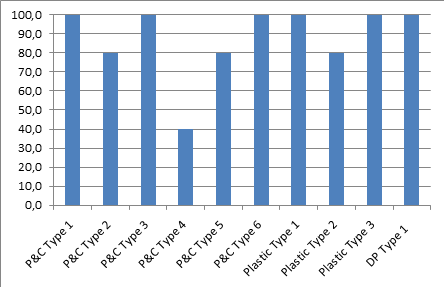
Diagram 2. Share of top-5 world TiO2 companies depending on TiO2 type producing (including ‘Sulphate’ and ‘Chloride’ rutile TiO2 grades), %
As you can see from the data, six types of TiO2 grades are issued by 100% of top companies, more three types of TiO2 grades are issued by 80% of companies, and only R & C Type 4 (special grade for printing inks) produced by 40% of the top five companies (ie, actually only two companies). Ie we can say that in general, all the top 5 companies in the world share the same range of products and have in their portfolio almost all range of products. In other words for grade of one manufacturer you can find the same analogue (with few exceptions) at other manufacturers.
We have analyzed in several cuts the representation of grades of different types in portfolio of China producers of titanium dioxide. Diagram 3 shows the shares of companies producing 'sulphate' rutile grades of a particular type, including companies that produce only anatase grades.
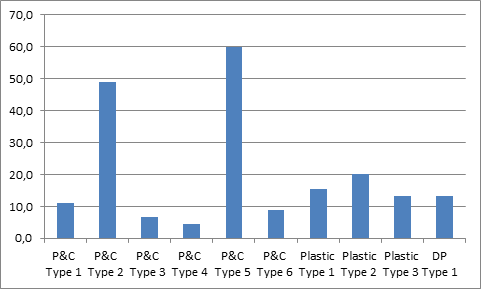
Diagram 3. Share of China "Sulphate' TiO2 companies depending on TiO2 type producing (from 45 'Sulphate' companies including also anatase manufacturers), %
Diagram 4 shows the shares of companies producing 'sulphate' rutile grades of different types (it includes only companies having in portfolio rutile grades; producers of only anatase grades are excluded).
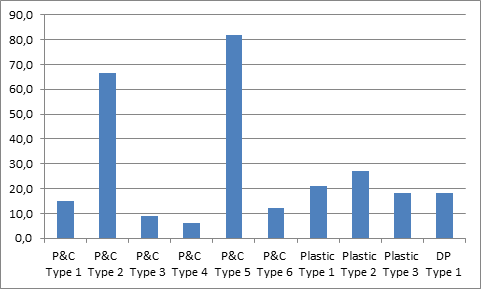
Diagram 4. Share of China 'Sulphate' TiO2 companies depending on TiO2 type producing (from 33 'Sulphate' companies only rutile manufacturers), %
If you compare China TiO2 Companies with top-5 global manufacturers of titanium dioxide, that are evident following characteristic differences:
- Of the 10 types of different rutile grades the China manufacturers prefer to produce mainly P & C Type 2 and P & C Type 5. The remaining eight types of titanium dioxide release from 4.4% to 20% of China manufacturers (if producers of anatase only are included in the statistics) or from 6.1 to 27.3% (if producers of anatase only are not included in the statistics). At the same time one grade is produced by 40% of the top 5 world manufacturers, three grades are produced by 80% of the top 5 world manufacturers and six grades are produced by 100% of the top 5 world manufacturers.
- Products P&C Type 1, P&C Type 3, P&C Type 6, Plastic Type 1, Plastic Type 3, DP Type 1 are produced by all companies of the top five world producers. At the same time in a portfolio of the China companies these products are less presented.
- The least represented among the world top 5 companies P & C Type 4, it is also the least represented grade in portfolio of China companies.
- Even most widespread grades among China manufacturers of TiO2 types of P & C Type 2 and P & C Type 5, produce not all manufacturers of rutile TiO2 (66,7% and 81,8% respectively of companies). At the the top 5 world companies these types of TiO2 produce 80% of the companies. In fact, only by the type of P & C 5 there are match in statistical data between top 5 of the world TiO2 companies and China manufacturers of rutile titanium dioxide as well as the overlap match on type of P&C Type 2.
- There are a large number of China companies that produce only anatase grades.
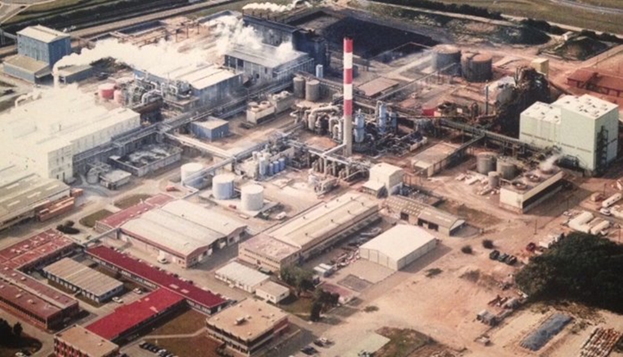
Huntsman Pigment's Calais site where Tioxide TR-52 grade is produced at present time Photo taken from https://media.licdn.com/mpr/mpr/jc/AAEAAQAAAAAAAALSAAAAJDQ4N2VmNTUxLWMxMmUtNDVjOC1hMGM4LTc0ZDA5MmMwOWIxNQ.jpg
We evaluated the proportion of 'sulphate' and 'chloride' grades of a particular type in the portfolio of the world's top 5 manufacturers of TiO2, depending on their type. The results are shown in Diagram 5.
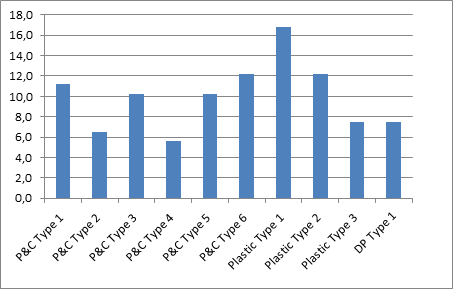
Diagram 5. Share of different TiO2 types of top-5 world TiO2 companies (from 107 ‘chloride’ and 'sulphate' rutile TiO2 grades), %
We also evaluated the proportion shown in Tables 11-16 'sulphuric' TiO2 grades of China TiO2 producers according to their type. The results are shown in Diagram 6. Uncoated Rutile grades of China manufacturing companies, which we conventionally carried in tables to Plastic Type 1, we have shown individual columns in the diagram 6. Uncoated grades of top-5 world TiO2 manufacturers we did not shown on the diagram 5, although they also produced by these manufacturers.
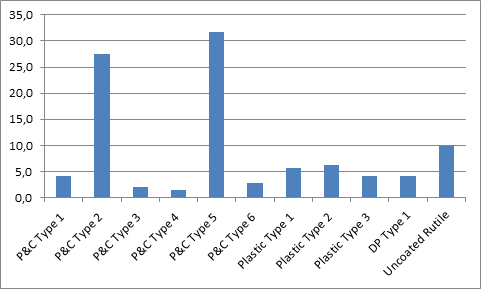
Diagram 6. Share of different 'sulphate' TiO2 types (from 142 'sulphate' rutile TiO2 grades), %
If we compare the popularity of TiO2 grades in China TiO2 Companies with top-5 world manufacturers of titanium dioxide, then again, we can see the corresponding specific differences:
- Grades of top-5 world manufacturers of titanium dioxide in approximately equal amounts presented in the portfolio of companies. The lowest amounts are grades P & C Type 4 (5.6%, which is not significantly different by the number from other types of marks), and the largest - grades Plastic Type 1 (16.8%). The China companies have significantly unequal representation of grades. The lowest number also constitute grades P & C Type 4 (1.4% - a sizeable in comparison with some other types minority), and the highest number of grades - grades P&C Type 5 (31,7%).
- Unlike the China companies at the top five world manufacturers of TiO2 not observed dominance of types R&C Type 2 and R&C Type 5.
- In a portfolio of the Chinese companies the representation of the eight types of grades in comparison with all brands is low (less 5% for R&C Type 1, R&C Type 3, R&C Type 4, Plastic Type 3, DP Type 1; less 6,5% for Plastic Type 1, Plastic Type 2).
We have allocated a separate table 17 and analyzed in several cuts the representation of 'chloride' grades one type or another in the portfolio of 'chloride' China manufacturers of titanium dioxide. The results are shown in Diagram 7.
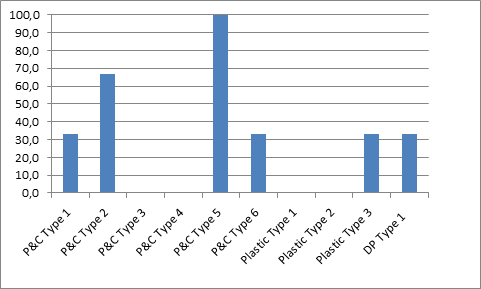
Diagram 7. Share of ‘Chloride’ China TiO2 companies depending on TiO2 type producing (from 3 ‘Chloride’ companies), %
Concerning 'chloride' grades of China companies we can draw the following conclusions:
- Similar to the situation with the China 'sulphate' grades of TiO2 at chloride companies have also dominated types P&C Type 2 (66,7%) and P&C Type 5 (100%).
- In the portfolio are completely absent types of grades P&C Type 3, P&C Type 4, Plastic Type 1, Plastic Type 2.
We are also evaluated the proportion shown in Table 17 'chloride' TiO2 grades of China TiO2 manufacturers, depending on their type. The results are shown in Diagram 8.
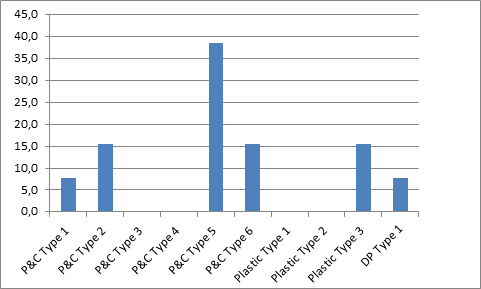
Diagram 8. Share of different TiO2 types of China ‘chloride’ TiO2 companies (from 13 ‘chloride’ TiO2 grades), %
As we can see, among China 'chloride' TiO2 grades definitely dominates P & C Type 5 (38.5%), other grades present in an amount of one or two specimens.
In general, it seems that the grade variety of China 'Chloride' TiO2 manufacturers repeats the tradition which has developed among China titanium dioxide producers (although it have to be noted that some positive trend to expansion of assortment are observed at the company China TiO2 Company (‘Chloride route’)-03).
So what will detect the potential consumer of titanium dioxide from Europe or North America if he decides to replace the production of titanium dioxide of the top 5 companies in the world for a similar product from China?
Everything will depend on the application for which he is looking for a product.
- If it will be a manufacturer who needed general-purpose grades without special requirements, he would have rather extensive choice.
- If it will be, for example, manufacturer of décor paper for laminates, choice of it will reduced to only 6-7 grades of 4-5 TiO2 companies.
- If it will be manufacturer that is looking for super durable grade for Aerospace, Marine or other similar applications, they will select from 4-6 grades of 4-6 TiO2 companies. If it will be manufacturer of PVC for windows profiles, then he will have to select from 5-7 grades of 5-7 TiO2 companies.
- If it will be manufacturer of PVC for windows profiles, then he will have to select from 5-7 grades of 5-7 TiO2 companies.
- If it will be manufacturer of Printing Inks, he will select from 1-2 grades, one of which is TR-52 (manufactured by Huntsman to Henan Billions).
- If it will be manufacturer of E-Coatings, it will select from of 5-7 grades of 5-6 TiO2 companies.
- If it will be manufacturer of high solid paints, it will have to select from 2-3 grades of 2-3 TiO2 companies.
- If it will be manufacturer of high-temperature thin polymer films, then it will have to select from 6-7 grades of 6-7 TiO2 companies.
- If it will be manufacturer of engineering plastics, it will have to select from 8-9 grades of 8-9 TiO2 companies.
But if it will be the manufacturer of Automotive finishes and refinishes, who is looking for a highly disperse grade with high durability, it will face the real boom offers: it will have to select the appropriate grades of 50 or more proposals of more than 25 companies. But the real problem would be that in spite of such abundance of proposals, not all products in their similarity in chemical composition with the grades of P & C Type 5 of top-5 world TiO2 manufacturers have important properties required for this application, namely, the required level of dispersibility, initial gloss and durability (weather ability).
The same problem can be detected by companies from all of the above examples. May happen that even one of those 5-6 grades of titanium dioxide, which are FORMALLY (referring to the declaration of the China TiO2 producers about the possibility of application, chemical composition similar to the same products of the top 5 global manufacturers of TiO2 etc.) will fit the required type, not all (if at least one) will possess ACTUALLY the demanded properties for this or that application.
So, from the evaluation of grade assortment let's consider the issues related to the qualitative characteristics of China grades of TiO2 producers and assessing of availability at they the declared consumer characteristics.
To be continued.